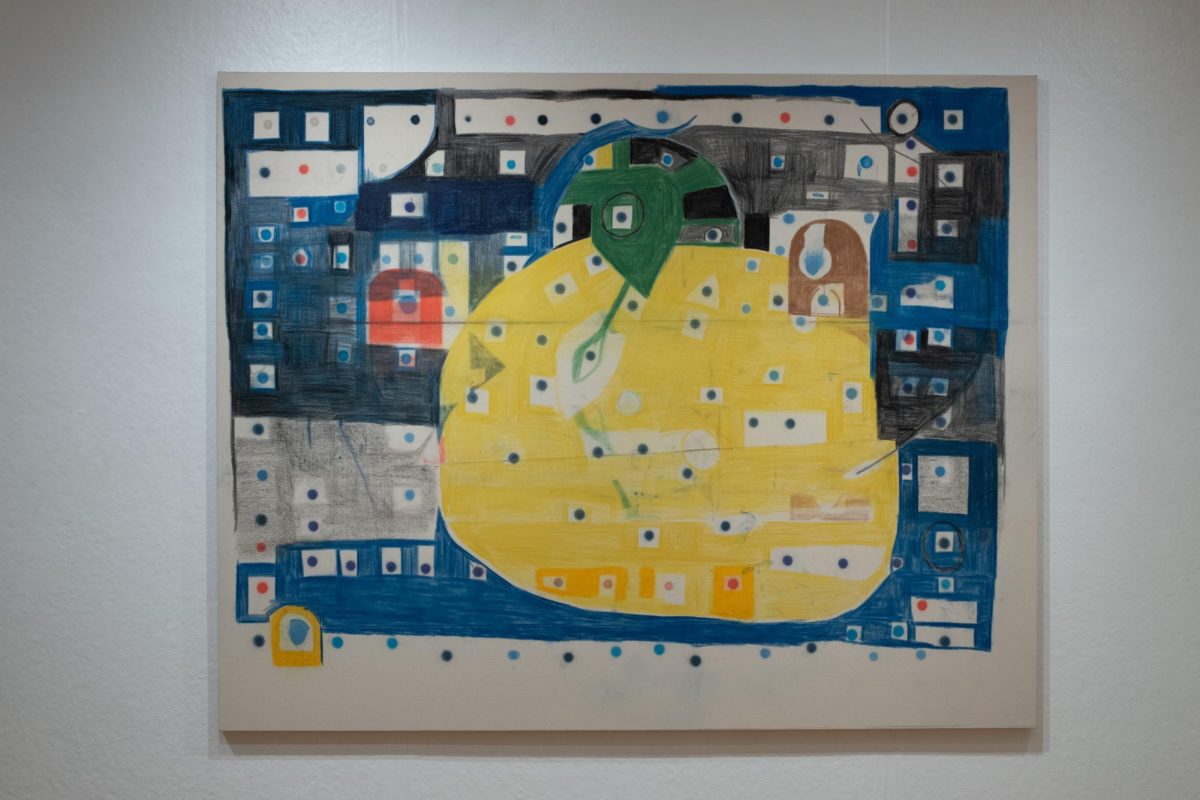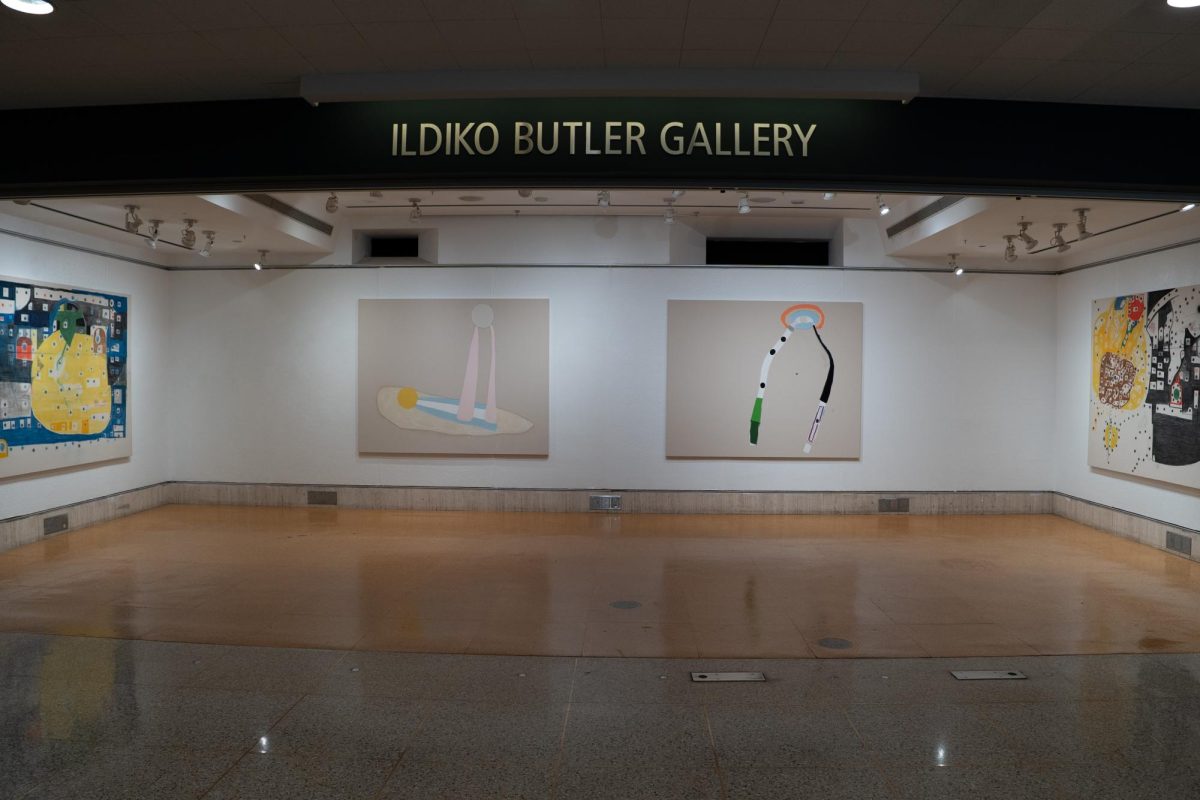A quote opens the exhibit “Cartographer’s Tunnel” in the Ildiko Butler Gallery: “Certain abstract paintings live as maps towards our interior labyrinth.”
The exhibit showcases the work of Mason Saltarelli, Fordham College at Lincoln Center (FCLC) ’01, and displays just four paintings by the alumnus.
All of Saltarelli’s work is abstract; there is no figuration in any of his work. Consequently, the work challenges the viewer to interpret it not only aesthetically, but also through a self-reflective psychological lens.
Psychologists have been using pictures to further understand their patients’ unconscious minds for decades — most famously, with Rorschach inkblot tests. Devised in 1921 by artist Hermann Rorschach, this test consists of 10 cards, each with a distinct inkblot on it. Patients are asked to describe what they see represented by each blot of ink, and their answers are then analyzed to uncover an unconscious aspect of their personality. For example, if a patient keeps seeing violent imagery in the inkblots, it may be a sign of trauma.
It seems that “Cartographer’s Tunnel” is having the intended effect: making people self-analyze.
I was curious about the kinds of reactions that Saltarelli’s paintings would elicit in the Fordham community, so I decided to have some fun and use his paintings as Rorschach tests.
I took a postcard of each painting in the gallery, labeled it numbers one through four, then wandered the halls of the Lowenstein building with my cards brandished.
My results were fascinating. It turned out that, when faced with one of the paintings, people would almost universally either personify it or at least see a living thing; however, they rarely agreed upon smaller details.

The card showing the painting where one half of the canvas is covered in an organic black shape and the other is covered by a yellow, circular shape, was interpreted by Wes Nelson, FCLC ’29 as “a cat and a flower,” while Spencer Doyle, FCLC ’29, saw it as a “town or a city.” Both of my peers saw multiple living things interacting with one another, but in dramatically different ways.
The most interesting responses, however, came from card number three, a mostly blank canvas with two circular objects and connected colored cones. Every person I asked saw something related to reproduction or movement. Spanish professor and curator Dr. Carey Kasten saw a person doing “pilates,” while Nelson very quickly responded that he saw a “mother and child.”
The most common answer people gave, no matter how euphemistic they were trying to be, was that they saw two people having sex. It was fascinating to me that so many people parsed a dynamic and intimate significance from an ostensibly minimal painting.
I do not claim to understand these patterns or why my subjects all aligned with them. However, it was incredible to watch people break away from the flippant and all-too-common “I could do this myself” attitude that people approach modern art with, instead focusing on what the work meant to them.
“Cartographer’s Tunnel,” located across from the escalators up to the Lowenstein Center, is a very small exhibition. It could feasibly be looked through in 30 seconds. My shortest interview was twice that amount of time, and conducted while my participant was rushing to class. Saltarelli’s works fascinated people; everyone had something they wanted to say about them. People spent minutes reflecting and connecting to the art.
It seems that “Cartographer’s Tunnel” is having the intended effect: making people self-analyze. Analysis is a goal of Saltarelli’s: He was described in the press release as a “story” painter — not in a depictive, literal way, but rather, “a language that transcends the dry recitation of sequenced events to capture the immediacy of emotion.” He is an intuitive painter, challenging us to consider the story he has set before us in our own way.
Saltarelli, who has lived in the New York City area since his graduation from Fordham in 2001, is often on display in local galleries like Charles Bank in Manhattan and Interstate Projects in Brooklyn. As Fordham students, we have a unique chance to see the art in our very halls. Saltarelli’s work will be on view in the Ildiko Butler Gallery until Nov. 19. Take a look. What do you see?

